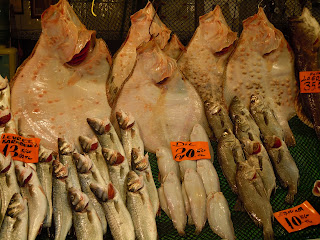It is basic dogma that graffiti must be covered up immediately, and the faster you take care of it, the better. Let them know who's boss! Property managers will tell you that once you let those taggers get a hold on things, you've lost it. And the police tell us tags indicate gang activity. For the most part, they're right. But at some point, and in the right context, a city's graffiti is lifted to a true art form, and becomes the icing on the cake for your visit.
On a stroll through Hoxton and other East London neighborhoods yesterday, I came across a ton of great pieces. These are not simple tags, although there were plenty of those around, too.
These are clearly well thought-out, extremely well-executed, stunning works. Particularly around the better works, were repeated tags - it's as though those taggers wanted to be seen nearby the work of the greatest graffiti artists. A sort of endorsement. But it's rare to see someone tag right over the best pieces; that's an insult.
My favorite pieces were near the new Overland train line (there's another story there, about how commuter rail can be effectively implemented right through neighborhoods, and dang, it was quiet!). Here, the authorities gave up an old wall, made it open for the artists to have at it. It's hard to say what's 'best:' interesting images, or works with content? What's more compelling?
I encountered two artists who were working on new pieces. I asked if they were being paid for it, and they said no, they do it for the love of it. Here's one of them, Dave. He's been working in this medium since he was 13 years old, a little terror, for sure. He's since gone on to art school, and has been making a go of it, career-wise. When a wall is designated 'open' to use, they can go about their business in the daylight.
As I continued my walk, I found wall after wall of gorgeous, amazing work. I couldn't believe the vibrancy, the creativitity, and humor!
I stopped in for lunch at a club called Cargo end enjoyed a jerk chicken burger, some shade and Wimbledon on the tv. In a conversation with the server, I learned they have two Banksie works; these two works increased the property value by over 100,000 pounds. Banksie is perhaps the world's most famous - and still anonymous - street artist. So this 'blight' has real value.
Seeing this work in context drives home the point that the world's best cities don't try to stifle creativity, and are the realm of the unexpected. With graffiti, I suppose the choice is to try to stop it or create a culture that facilitates the best of it. In a place like London's gritty East End, the latter approach makes perfect sense. Which ones do you favor, the interesting images, or the ones with interesting content?



























